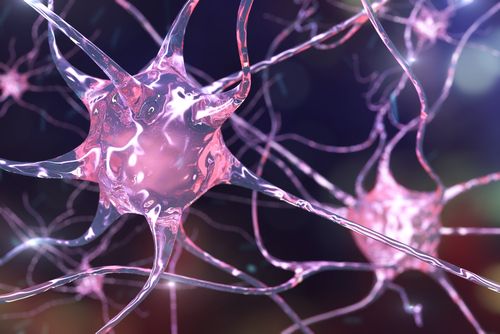LEMS Treatments Don’t Affect Calcium Channels, Study Finds
Written by |

The molecule 3,4-diaminopyridine (3,4-DAP) — approved as Firdapse and Ruzurgi to treat people with Lambert-Eaton myasthenic syndrome (LEMS) — works to directly induce the release of chemical messengers by binding to potassium channels, without affecting calcium channels as previously thought, a study reported.
The study, “A high affinity, partial antagonist effect of 3,4-diaminopyridine mediates action potential broadening and enhancement of transmitter release at NMJs,” was published in the Journal of Biological Chemistry.
LEMS is characterized by the immune system mistakenly attacking components of the neuromuscular junction (NMJ), the place where nerve fibers contact muscle cells.
Specifically, antibodies produced by immune cells target calcium channels on nerve cells involved in the release of the neurotransmitter acetylcholine, a chemical messenger that triggers muscle contractions. Low levels of acetylcholine can cause some muscle fibers to fail to contract, leading to weakened muscles.
Firdapse and Ruzurgi are oral therapies for people with LEMS. Both work by blocking other nerve cell channels called voltage-dependent potassium channels. This is thought to cause the opening of any remaining calcium channels, allowing the release of acetylcholine and improving muscle function.
Recent studies challenge this proposed mechanism of action for 3,4-DAP, as early work making this connection used a slightly different molecule. Yet, research reporting additional targets of 3,4-DAP in cells used concentrations well above those found in patients’ blood after treatment.
To investigate the mechanism accounting for 3,4-DAP’s clinical response, researchers at the University of Pittsburgh led a series of experiments to test the impact of 3,4-DAP on cells at therapeutic concentrations found in patients.
A first set of experiments tested the impact of different doses of 3,4-DAP on two types of potassium channels commonly found at the neuromuscular junction (Kv3.3 and Kv3.4) using HEK293T cells and a technique that measured the electrical current passing through channels.
3,4-DAP caused a dose-dependent blockage of current through both potassium channels, results showed. At concentrations similar to therapeutic levels — 1.5 micromolar (mcM) — 3,4-DAP led to a 10% blockage of current in both channels.
Notably, an additional experiment confirmed that this concentration did not affect two NMJ calcium channels, as previously thought.
To investigate further, researchers evaluated how 3,4-DAP at 1.5 mcM affected neuromuscular junctions in mice by measuring the action potential — where the voltage across membranes rapidly rises and falls, which underlies the release of neurotransmitters such as acetylcholine. They found that 3,4-DAP enhanced (broadened) the action potential.
These results were replicated using frog nerve cells to show 3,4-DAP enhanced the action potential in a separate species. High doses of 3,4-DAP (100 mcM) enhanced the action potentials even further, showing that 3,4-DAP acts in mammalian and frog NMJs in a dose-dependent manner.
Finally, the researchers characterized the effects of 3,4-DAP on neurotransmitter release at neuromuscular junctions in mice that had been chemically weakened to mimic the disease’s effect.
For these experiments, they measured endplate potentials (EPPs), which are voltages that cause contraction of skeletal muscle fibers by the release and binding of acetylcholine at the neuromuscular junction.
These tests were carried out in mouse and frog NMJs, with exposure to 1.5 and 100 mcM of 3,4-DAP. The recordings were done in the presence or absence of a calcium channel blocker to test whether these channels are important for 3,4-DAP’s effects.
Mouse NMJs increased EEP by about 3.2 times with 3,4-DAP at 1.5 mcM, and by 8.8 times after 100 mcM. Similar results were found using frog NMJs.
Importantly, the addition of the calcium channel blocker had no significant impact on these results, demonstrating that 3,4-DAP’s effects are independent of calcium channels.
“From these results, we conclude that low micromolar concentrations of 3,4-DAP act solely on [potassium] channels to … enhance transmitter release at the NMJ,” the researchers wrote. “Furthermore, [calcium] channels do not significantly contribute to the effects … at the NMJ of a higher concentration (100 μM) of 3,4-DAP.”





